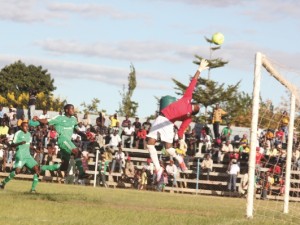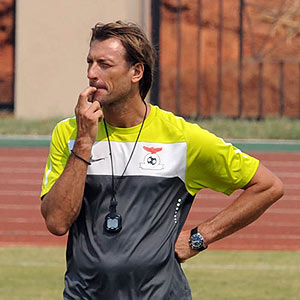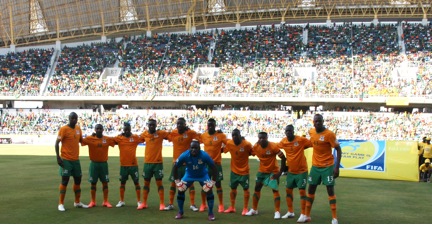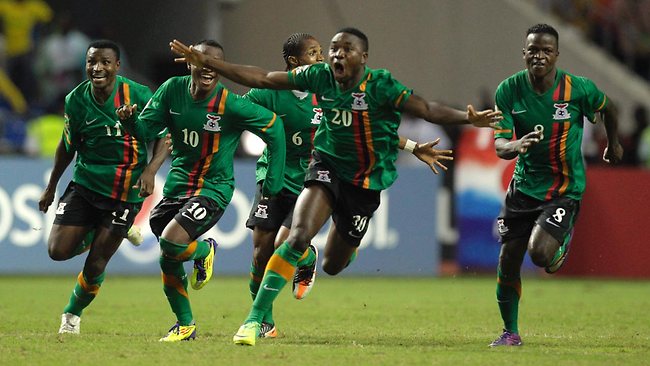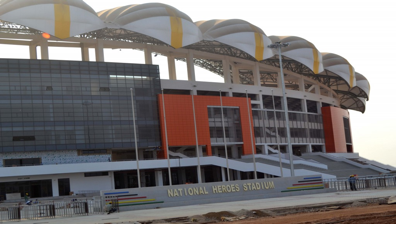
Guest Post by *Hikabwa Chipande
“If you want to see the heart of China’s soft-power push into Africa,” writes Elliot Ross in a recent piece for Sports Illustrated’s “Roads & Kingdoms” series, “you’ll find it in the continent’s new soccer stadia.”
I am one of the many Zambians saddened that most of our national team matches are now staged at the Chinese-built Levy Mwanawasa Stadium in Ndola, an industrial town on the Copperbelt 200 miles north of the capital, Lusaka. This is not only because I live in Lusaka, where the team used to play its home games, but also because the move greatly diminishes, if not erases, the deeper significance of historic football venues.
It was in Lusaka’s then-newly constructed Independence Stadium on October 23, 1964, that the Union Jack was lowered and the new Zambian flag raised at midnight in a sumptuous ceremony attended by the Princess Royal and Kenneth Kaunda’s new cabinet. The following day, the stadium hosted the final of the Ufulu (independence) tournament. Ghana’s Black Stars, reigning African champions, beat Zambia 3-2 in front of about 18.000 spectators. From then on, almost all important international matches (as well as domestic cup finals) were played at Independence Stadium, a local example of how stadiums in postcolonial Africa, “quickly became almost sacred ground for the creation and performance of national identities” (Alegi, African Soccerscapes, p. 55).
Occasionally, Dag Hammarskjöld Stadium in Ndola hosted big matches. Constructed by the Ndola Playing Fields Association during the colonial era, this ground was rechristened in honor of the Swedish Secretary-General of the United Nations, Dag Hammarskjöld, who died in 1961 in a plane crash near Ndola. After the British colony of Northern Rhodesia became independent Zambia, the stadium was donated to the Ndola City Council. As the largest stadium in the Copperbelt, the traditional hub of football in the country, it hosted virtually every important match in the region.
In January 1986, the Zambian government bought into the idea of hosting the 1988 African Nations Cup finals. Mary Fulano, then a member of the Central Committee in charge of sport, informed the public that the government had started renovating both Independence and Dag Hammarskjöld stadiums. But in December 1986, after Dag Hammarskjöld stadium had been demolished for its planned reconstruction, Youth and Sport minister Frederick Hapunda announced that government had withdrawn its bid to host the 1988 tournament.
Copperbelt residents complained that they needed their beloved stadium, but the government kept on issuing empty promises. Surprisingly, two decades later, when an opportunity arose to build a new stadium in Ndola courtesy of China, the Zambian government opted for a completely new Levy Mwanawasa Stadium in a different area, thereby burying the rich history of Dag Hammarskjöld Stadium.
In 2012, I attended the inauguration of the Levy Mwanawasa Stadium: a 2014 World Cup qualifier between Zambia and Ghana (see my blog post about it here). The atmosphere at the venue was similar to the one described by Elliot Ross at the Estádio Nacional do Zimpeto in Maputo. Unlike the game in Maputo, however, there was no pushing and shoving at Levy Mwanawasa, thanks to plenty of available space and sound event management. But the stadium was so vast that the crowd could not sing and chant cohesively, or create the electrifying atmosphere so many of us treasure at football grounds.
The ignominuous end for Independence Stadium in Lusaka came after FIFA inspectors in 2007 declared it unsafe for international matches. As a temporary solution, the Football Association of Zambia moved internationals to Nkonkola Stadium in a small mining town on the border with the Democratic Republic of Congo. Bolstered by another Chinese loan, the Zambian government then erected a new National Heroes Stadium directly across from Independence Stadium and the graves of national team members who perished in the Gabon air crash of 1993.
The demolition of Independence Stadium prompted many people to wonder why the government chose not to renovate the hallowed ground and build the Chinese-funded stadium somewhere else in Lusaka. While younger Zambians tend to like the new sporting arenas, many older fans lament the disappearance of stadiums they associate with the stories of their personal lives, their memory, their past.
Regardless of age and status, Zambians are very much aware of “Chinese soft diplomacy.” People know that Chinese stadiums have less to do with friendship or mutual cooperation and more with gaining access to Africa’s material resources. Yet there is very little that can be done about it because the government does not consult with citizens on economic deals with China. There is criticism about Chinese firms bringing very cheap laborers to work in construction sites. But there seems to be a general feeling among the population that it is acceptable for the Chinese to build stadiums and other infrastructure in exchange for copper because the alternative is allowing Zambia’s political leaders to pocket the profits from this wealth.
—
*Hikabwa Chipande is a PhD candidate in History at Michigan State University. He is a recipient of the FIFA Havelange Research Scholarship for his doctoral dissertation on the social and political history of football in Zambia, 1950-1993. Follow him on Twitter at @HikabwaChipande
